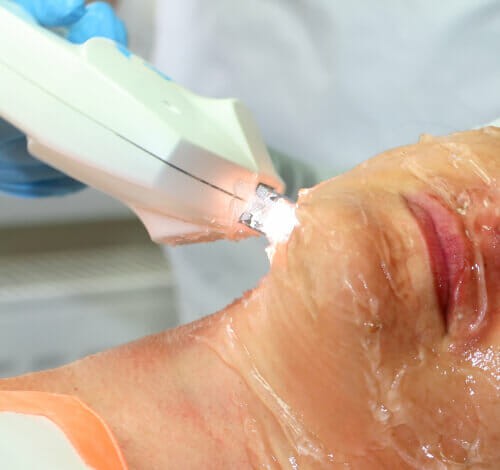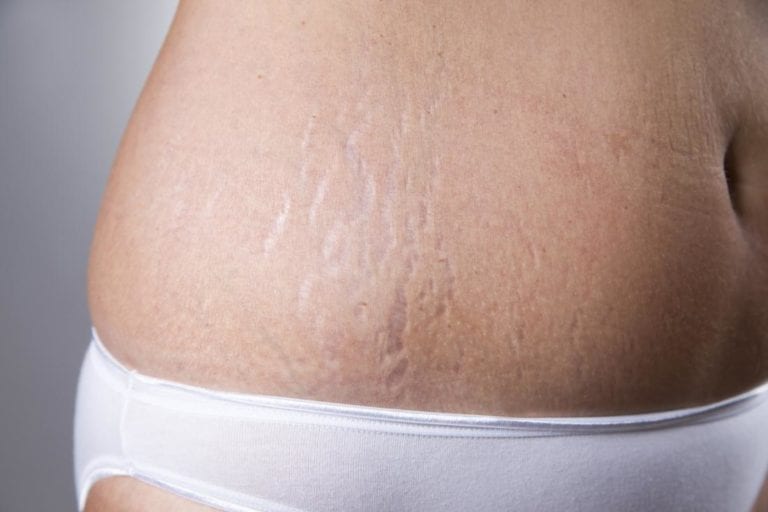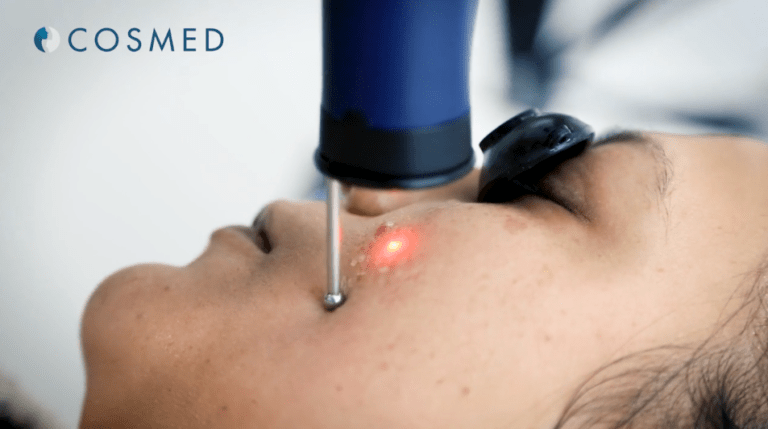

CO2 Laser Resurfacing for Skin
If you are tired of looking in the mirror and seeing scars or sun-damaged skin looking back at you, CO2 laser resurfacing could be just the thing you need. Here at Vida Wellness & Beauty, we are delighted to offer CO2 laser resurfacing treatment to our clients. Based in Mexico, our clinic is not only popular with locals but those traveling from the USA who are looking for affordable laser treatment of the highest standard (while also getting a relaxing vacation in the process!)
So, what can you expect from CO2 laser resurfacing and why do we recommend laser treatment so much?
All you need to know about CO2 laser treatment
Laser skin resurfacing is one of the latest advancements that has been made in the world of non-surgical treatments for skin rejuvenation. Laser skin resurfacing is also commonly referred to as pixelated carbon dioxide laser treatment or fractional CO2 laser treatment. This type of laser has the longest wavelength when compared with all the other options on the market at the moment. Not only this but unlike a lot of other lasers, it can be used safely on darker skin so long as the correct adjustments are made to the settings. With the experience that we have with laser treatment, you have nothing to worry about in this regard.
What does resurfacing mean in skincare?
Carbon dioxide laser resurfacing is the process of exfoliating damaged or old skin’s outer layers to reveal younger-looking, smoother skin rejuvenation underneath, aiding in the skin’s appearance. Treatments like chemical peels, microdermabrasion, and ablative laser resurfacing can help with this.
Laser resurfacing is a very precise laser carbon dioxide resurfacing that can improve the texture and tone of the skin as well as give the face a smoother, more youthful appearance. It’s crucial to remember that these procedures can be uncomfortable and involve some downtime, so it’s always advised to speak with a skilled and experienced skin care specialist before undergoing any laser resurfacing procedures.
The outer layers of skin are removed via laser ablative laser resurfacing. The energy from the laser treatments stimulates the growth of new collagen, which enhances the new skin tone and texture. Laser resurfacing, specifically CO2 laser resurfacing, uses a laser beam to remove the outer layers of skin.
It’s crucial to remember that these treatments might be uncomfortable and take some time to recover from. It’s always recommended to consult with a qualified and experienced skin care professional, such as a board-certified plastic surgeon, before undergoing any resurfacing treatment, such as chemical peels or laser therapy. They will consider your individual needs, goals, and medical history before recommending a course of treatment.
See these great laser treatment results:
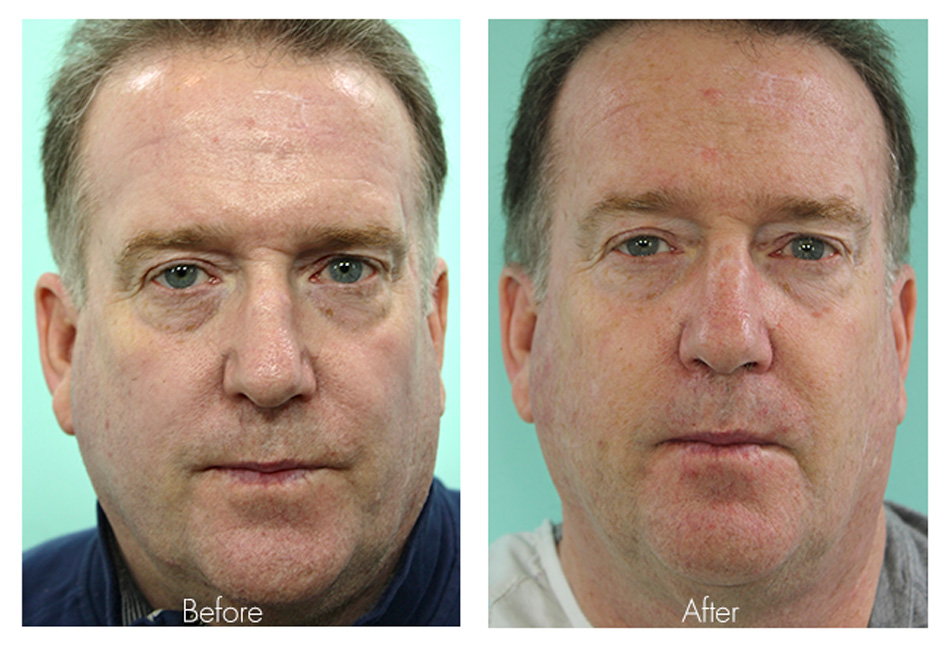

What sort of conditions are treated by laser resurfacing?
There are many different types of conditions that are treated with CO2 laser resurfacing. This includes the following:
- Traumatic scars
- Surgical scars
- Acne scars
- Blotchiness
- Wrinkles
- Textural skin changes
- Sun damage
These lasers are very effective when it comes to treating deeper wrinkles. A lot of the other treatments on the market today will only help with very fine and surface-level wrinkles, but this is not something that you need to worry about when you go for CO2 laser resurfacing.
Laser treatment can be used around the mouth area, as well as on the delicate skin on your eyelid. It is also very effective for precancerous growth and sun damage too.
Laser treatment can also be used on your legs, arms, chest, blotchiness on the neck, wrinkles, and texture. Laser resurfacing should only be done by professionals though, as complications can happen if not, and this is why you should always rely on the team at Vida, as we have many years of experience and all the necessary qualifications.
How CO2 laser skin resurfacing works
Now that you know about the benefits of laser treatment and who it is suited for, let’s look at how it works. With CO2 laser resurfacing, CO2 fractionates, and laser beams are taken, and then that beam is pixelated into thousands of small, little light shafts. These tiny light shafts will then penetrate your skin’s deeper layers. The skin will then repair the small shafts and it will do this as it pushes out the skin that is damaged and replaces it with new skin instead. The “collateral” heat damage also has the benefit of helping to promote collagen growth. All of this is done while ensuring that the rest of the skin remains untouched and is not damaged. Moreover, this treatment is compatible with a lot of other treatments as well. While they often are not done on the same day, there is nothing stopping you from getting other treatments on your skin.
How many treatments do you need of CO2 laser?
Depending on the person’s treated skin state and desired results, a different number of sessions may be required. The majority of people need one to three treatments, according to the American Society of Plastic Surgeons, to get the best outcomes. In general, fewer treatments are required the deeper the treatment. Even while a deeper procedure would require more recovery time, the effects will be more dramatic.
It is important to note that this type of procedure can be a significant investment in terms of both time and money. It is important to consult with a board-certified cosmetic surgeon to determine the best plan for your individual needs. They’ll be able to give you an estimate of the number of treatments you’d require to get the desired outcome.
It’s also crucial to remember that ablative laser resurfacing outcomes might not be apparent immediately and might take a few weeks to fully manifest. Over the course of several months, the treatment’s results can also keep improving.
Anyone who wants to enhance the appearance of their skin frequently can choose CO2 laser treatments. However, how many sessions are required to get the desired outcomes is one of the most frequently asked questions regarding these cosmetic treatments.
Different sessions may be required depending on the patient and the disease being treated. Compared to more serious issues like acne scars, repairing fine lines and wrinkles could only require one to three sessions.
It’s vital to remember that the number of treatments required will also depend on the skin type and the individual’s healing rate. People with darker skin, for instance, might need more sessions since they run a higher risk of hyperpigmentation after treatment.
How long do CO2 laser resurfacing results last?
CO2 laser resurfacing can produce long-lasting results, but the duration of those results will depend on several factors, including the depth of the resurfacing, the individual’s skin types and conditions, and their skincare regimen following the procedure.
In general, more superficial resurfacing procedures will require maintenance treatments more frequently than deeper resurfacing procedures. However, typical treatment results last at least 12 months to 2 years. Also, it’s important to note that after the procedure, you may experience an improvement in your skin tone and texture, a reduction in fine lines and wrinkles, and a lessening of scarring, age spots, and other blemishes.
The results can last for several years. However, it’s important to note that more superficial resurfacing procedures require maintenance treatments more frequently than deeper ones.
How long the results last might also be influenced by the depth of the resurfacing. The results may not stay as long if more profound laser treatments are set at a lower depth. However, with the proper aftercare, the treatment can generally deliver long-lasting results lasting up to 2 years.
It’s also important to note that people may see improvements in their skin’s tone and texture, a reduction in wrinkles and fine lines, and a lessening of scars, age spots, and other blemishes after the operation. The treatment has downtime that can last a few weeks as well.
Overall, CO2 laser resurfacing is a safe and efficient approach to improve the appearance of the skin, and with the proper aftercare and maintenance, results can endure for several years. Individual results, however, may vary, so it’s crucial to discuss your particular goals with a certified healthcare professional before beginning any treatment.
How long does it take to recover from CO2 laser resurfacing?
The depth of an ablative laser resurfacing procedure and the patient’s healing rate can affect how long recovery takes. In general, the recovery process can take several weeks to a few months. The treated area will be swollen and red for a few days following the treatment. The new skin underneath will then start to peel and flake off. This process could take a few days to two weeks.
During the healing process, it’s essential to keep the treated area moisturized and protected from the sun. To assist you in caring for your skin while it heals, your surgeon will provide you with thorough post-treatment instructions. During the healing process, it’s crucial to stay away from any activities that could irritate or harm the treated area, such as vigorous exercise, swimming, and sunbathing.
Depending on the patient’s skin, general health, and the extent of the treatment, the ultimate benefits of the procedure can be seen after several months, and the recovery period may vary. It is recommended to consult with the cosmetic surgeon who performed the procedure for the specific recovery time and instructions.
Depending on the patient and the amount of treatment, recovery times can vary. Redness and swelling may persist for up to two weeks in some patients following the treatment. The skin that has been treated frequently feels tight and burnt. The skin that has been treated will begin to crust and peel off during the first several days; up to 10 days may pass throughout this process.
To speed up recovery and lower the chance of problems, it’s crucial to keep the treated area hydrated and out of the sun during this period. The ultimate effects might not become visible for a few weeks because the new skin will need time to cure and improve its look, healing skin, and the surrounding skin that was treated, this treated skin texture is no longer wrinkled skin all skin color, skin types, can benefit and change the skin’s appearance. To get the desired outcomes, it may generally take several treatments. Patients can usually resume their jobs and daily routines within a few days. Still, they should avoid vigorous activity, exposure to the sun, and other activities that might irritate the treated area.
For at least six months following the procedure, it is recommended to stay out of the sun and wear sunscreen. Your surgeon will provide detailed instructions for your recovery and follow-up. It’s crucial to remember that ablative laser resurfacing is a major treatment, and patients should have reasonable expectations regarding the healing time and the outcome.
Overall recovery times might differ. However, they usually last between one and two weeks. Within the first week or two following the surgery, most patients will see a noticeable change in the appearance of their skin. The skin may not entirely recover, and the final effects might not be noticeable for weeks or even months.
What are the risks of CO2 laser?
When carried out by a certified and experienced cosmetic surgeon, the treatment is regarded as secure. However, some risks and side effects should be considered, just like with any medical procedure.
Pain and discomfort during and after the treatment are among the most frequent risks. Redness, swelling, and itching are common in patients, and these symptoms may need to be treated with painkillers. Temporary changes in skin tone, such as hyper- or hypopigmentation, may also occur in certain people
Scarring is another risk, even though the procedure is intended to remove damaged skin and reveal smoother, cleaner skin beneath, the laser light may occasionally result in scarring. Patients with a history of scarring or darker skin tones, which are more prone to hyperpigmentation, are at especially high risk.
Another potential risk is infection. The operation leaves microscopic lesions on the skin’s surface, which, if neglected, could get infected. To reduce the risk of infection, patients should be sure to adhere to the post-treatment guidelines given by their surgeon.
Last but not least, CO2 laser resurfacing may alter skin sensation. While some patients temporarily lose feeling in the treated area, others might develop increased sensitivity. Most of the time, these symptoms go away within a few weeks or months, but they can occasionally linger.
The following are some of the most common dangers involved with CO2 laser treatments.
Pain and discomfort:
During and after the process, the treatment may be uncomfortable and cause some pain. Typically, a cream recommended by a doctor, or an over-the-counter painkiller can handle this.
Scarring:
Although it is unlikely, there is a chance of scarring. Changes in skin pigment, such as hyperpigmentation or hypopigmentation, may occasionally result from treatment. Individuals with darker skin tones are more likely to experience these changes.
Infection:
There is a small risk of infection with any surgical procedure.
Complication risk:
Although uncommon, problems like chronic redness, edema, or difficulty healing can happen.
What does a CO2 laser do for your face?
Resurfacing the skin is one of the key advantages of this treatment. The outer layers of aging or damaged skin are removed by the laser light that is focused on the skin. The CO2 laser is frequently used in medical and cosmetic procedures to enhance the appearance of facial skin.
A carbon dioxide (CO2) laser removes the outer layers of damaged skin on the face. The laser beams penetrate deep into the skin to vaporize and remove damaged tissue while stimulating the production of collagen, a protein that gives skin its elasticity. This results in new, healthy skin growth and a more youthful appearance.
It can also be used to treat various skin conditions, such as wrinkles, fine lines, acne scars, age spots, and other skin damage, such as sunburn. The laser energy stimulates the skin’s natural healing process, which can reduce the appearance of these imperfections.
The procedure can be used to treat a variety of skin concerns, including:
- Wrinkles and fine lines.
- Age spots, sun damage, and uneven pigmentation.
- Scarring from acne, including facial atrophic acne scars, and scarring due to other conditions.
- Moles, warts, and other harmless skin growths.
- Uneven, rough skin tone.
The entire face can be treated, or only particular areas like the neck, the area around the lips, and the area around the eyes. Local anesthetic is used during the procedure, either with or without sedation.
It’s vital to understand that not everyone is a good candidate because of the higher risk of scarring and pigmentation changes in those with darker skin. Additionally, before thinking about the operation, patients with active acne or other skin diseases should wait until those issues are resolved.
A CO2 laser’s ability to tighten facial skin is another advantage. The tightening of the underlying skin caused by the laser energy’s stimulation of collagen formation can give skin a more youthful and lifted appearance. CO2 lasers can also be used to treat pre-cancerous growths, such as actinic keratoses and certain types of skin cancer.
It’s crucial to remember that the treatment can be uncomfortable and take some time to recover from. Still, it is generally regarded as a safe operation with very few side effects. It’s always important to consult with a qualified and experienced cosmetic surgeon to determine if treatment is right for you. They will consider your individual needs, goals, and medical history before recommending a course of treatment.
Is CO2 laser resurfacing painful?
One of the most common questions patients have before undergoing this procedure is whether or not it is painful.
The medical procedure itself may be uncomfortable or painful both during and after the procedure. Depending on the person’s pain tolerance and if the treatment was an extensive resurfacing, pain intensity may change.
The laser beam used during the operation is pointed toward the skin, which may feel like a burning sensation. The laser beam used during the operation is pointed toward the skin, which may feel like a stinging sensation. To lessen discomfort, a numbing lotion or local anesthetic may be administered to the skin before the procedure. To lessen discomfort during the treatment, some surgeons additionally use cooling equipment.
The treated area may be swollen, red, and sensitive for a few days to a week after the procedure. During the healing process, painkillers may be recommended to help with pain management. Redness, stiffness, and itching are also frequent, and they often go away in a week or two.
It’s crucial to remember that everyone experiences pain differently and that pain levels might change based on the treatment strategy and the treatment location. What to anticipate in terms of pain and how they will handle it should be thoroughly explained to you by your doctor.
The American Society of Plastic Surgeons claims that although it’s mostly not regarded as painful, it can occasionally feel uncomfortable. During the course of the therapy, patients frequently report feeling a minor stinging or burning sensation.
Your skin can be rejuvenated, and several skin issues can be treated with CO2 laser resurfacing by a skilled dermatologist or cosmetic surgeon.
Sun exposure & CO2 laser resurfacing
When it comes to preserving healthy, youthful-looking skin, CO2 laser resurfacing and sun exposure are two crucial elements to consider. Both can significantly impact the appearance and health of your skin, so it is important to understand how they interact with one another.
Sun exposure is a major cause of skin aging and damage. The collagen and elastin fibers that give our skin strength and elasticity can be harmed by the sun’s ultraviolet (UV) rays. Wrinkles, fine lines, age spots, and other aging symptoms may result from this. Sun exposure can also raise the chance of developing skin cancer.
While this treatment can help improve the appearance of sun-damaged skin, it is essential to note that sun exposure after the procedure can undo the benefits from when the area of treated skin cells absorbs and forms the new treated skin tissue. This is due to the new skin cell’s increased sensitivity to UV damage after the treated skin. To prevent further skin damage, it is crucial to limit sun exposure for at least two weeks following the treatment and use sunscreen with an SPF of at least 30 and avoid medications that may cause sun sensitivity.
In conclusion, CO2 laser resurfacing and sun exposure affect the condition and appearance of our skin. Sun exposure can cause aging and skin damage, but it can help make sun-damaged skin look better. After the treatment, it’s crucial to limit exposure to the sun and use sunscreen to protect the skin from future UV damage.
How can CO2 laser resurfacing help with eyelid skin laxity?
As we age, the skin around our eyes can become loose and lax, leading to a tired and aged appearance. One treatment option that can help to address this issue is CO2 laser resurfacing.
This treatment can be used to help improve the appearance of eyelid skin that has become lax or loose. The skin’s ability to produce collagen is stimulated by laser radiation, which can aid in tightening and firming the skin on the eyelids. A more youthful appearance can be achieved by using laser light to eliminate age spots and fine wrinkles from the eyelids.
It’s crucial to remember that this is a surgical treatment that must be carried out by a qualified expert in a hospital setting. To determine if this procedure is right for you, speak with a board-certified dermatologist or plastic surgeon. The sensitive skin around the eyelids, frequently one of the first regions to show signs of aging, can be addressed with treatment. Additionally, the laser energy can be used to remove fine wrinkles and age spots on the eyelids, giving the area a more refreshed and revitalized look.
In conclusion, CO2 laser resurfacing is a successful treatment for people with eyelid laxity. It can help the skin look firmer and tighter, eliminate wrinkles and age spots, and make the area look younger.
How can CO2 laser resurfacing help reduce signs of skin aging?
CO2 laser resurfacing is a non-surgical procedure that uses a laser to deliver energy to the skin to stimulate collagen production and reduce the signs of aging. Collagen is a protein responsible for the skin’s elasticity and firmness.
One advantage is that it can address various skin issues, such as fine lines, wrinkles, age spots, acne scars, and uneven skin tone. Additionally, it works well for curing chest, hands, hand, neck, and face wrinkles.
Resurfacing with a CO2 laser is a powerful method for minimizing skin aging symptoms and enhancing skin quality. The procedure normally lasts between 30 and an hour, and the length of the recuperation depends on how much treatment was given. You might have some redness, swelling, and peeling in the days following the operation, but these side effects should go away in a week or two.
One of the key advantages is the ability to target specific skin regions, including the eyes, lips, and forehead, which are frequently the first to exhibit signs of aging. The treatment is flexible enough to be used by people of various ages and skin kinds since it may be tailored to address specific skin concerns and types.
In conclusion, CO2 laser resurfacing is an effective treatment for minimizing skin aging signs. It can help the skin look more youthful, eliminate wrinkles and age spots, and firm and tighten the skin. If you’re considering this procedure, you must consult a certified dermatologist or plastic surgeon to see if it’s the best choice.
How CO2 laser resurfacing can help reduce skin redness
CO2 laser resurfacing can help reduce skin redness caused by various conditions, such as rosacea and broken blood vessels. The laser energy targets the affected area and causes the red blood vessels to constrict, reducing the appearance of redness.
During the procedure, the laser energy is delivered to the skin in a controlled manner, causing the skin to heat up and stimulate collagen production. This can help improve the skin’s overall tone and texture, and in cases of redness, it can lessen the visibility of dilated capillaries and damaged blood vessels.
It can also help to reduce the redness by removing the top layer of damaged skin, which can be a source of inflammation. The procedure also promotes the growth of new, healthy skin cells, further reducing the appearance of redness.
In conclusion, CO2 laser resurfacing can be an effective treatment option for reducing skin redness caused by conditions such as rosacea and broken blood vessels. It’s crucial to remember that this treatment is a medical procedure and should only be carried out in a medical setting by a qualified practitioner. A board-certified cosmetic surgeon or a dermatologist should be consulted as well to check your medical history and help in deciding whether this treatment is appropriate for you and what outcomes you can anticipate.
These are just some of the areas that CO2 resurfacing can treat.
Wrinkles and fine lines
It can lessen the appearance of fine lines and wrinkles.
Crow’s feet
They are also known as lines and creases around and around the eyes.
Laugh lines, and lines and wrinkles on the forehead
Not only may it minimize wrinkles immediately, but it can also promote the growth of collagen over time, enhancing the condition of your skin.
Sun-damaged skin
UV radiation exposure may lead to the development of noticeable skin aging symptoms like:
- Sagging wrinkles are brought on by a loss of elasticity.
- Skin with a rough and uneven texture, spider veins, liver spots, and sunspots.
- All the above mentioned can be made significantly less obvious.
Baggy eyes
The term “baggy” or “hooded eyes” is typically caused by loose skin above the upper and lower eyelids. CO2 lasers can help tighten skin, as well as reduce the appearance of puffy eyes and enhance eyelid skin laxity.
Acne scars
By promoting collagen formation, which helps tighten and smooth out the scars, C02 laser treatment for acne scars helps lessen the appearance of acne scarring.
Warts
For warts, dermatologists typically suggest alternative treatments such as over-the-counter medications or freezing. However, warts that don’t respond to other therapies may be treated using CO2 lasers.
Skin tumors
By reducing and eliminating tissue with little bleeding or harm to the surrounding tissue, it can be used to treat or prevent skin cancer. A dermatologist may use CO2 lasers to treat some types of early-stage skin cancer.
Sebaceous hyperplasia
When sebum becomes stuck in an oil gland, sebaceous hyperplasia takes place. This results in the gland enlarging and producing a tiny, waxy lump on the skin, typically on the face. Although they are safe, some people choose to have them removed for aesthetics. These lumps can be successfully removed with CO2 lasers, preventing them from growing back.
Is CO2 laser resurfacing worth it?
CO2 laser resurfacing is a popular cosmetic procedure that uses a laser beam to remove the top layers of skin, revealing smoother, more youthful-looking skin beneath. It’s a safe and effective way to improve the appearance of the skin, but the question remains, is it worth it?
One study found that the treatment significantly improved the appearance of fine lines and wrinkles, with an overall improvement in skin texture and tone. Another study discovered that the treatment significantly reduced the appearance of acne scars. However, it’s essential to remember that results vary from person to person, and the procedure may not suit everyone.
First-time patients should also consider the treatment’s price and the recovery process’s length. Depending on if the procedure is an extensive resurfacing or a limited one, it can be costly, and the recovery period can be anywhere from a few days to several weeks. Overall, CO2 laser resurfacing can be a safe and effective way to improve the appearance of the skin. Still, weighing the potential benefits against the risks and costs is essential. Those seeking to address skin conditions may find it a good alternative.
In addition to improving the skin’s cosmetic quality, CO2 resurfacing makes the skin on the face healthier on a clinical and microscopic level. Numerous aesthetic and medical skin conditions can be treated, such as scars, skin cancer, apparent aging, and sun damage. Before beginning any treatment, getting a consultation with a certified healthcare professional is recommended.
Book a consultation
When you book a laser resurfacing consultation with us, whether virtual or in person, we will make sure that we thoroughly assess your skin to make certain that this is the correct treatment for you. If it is not, we will make recommendations regarding another treatment that may be better. Nevertheless, the choice is always yours. This is also the perfect opportunity for you to ask any questions that you may have about CO2 laser skin resurfacing.
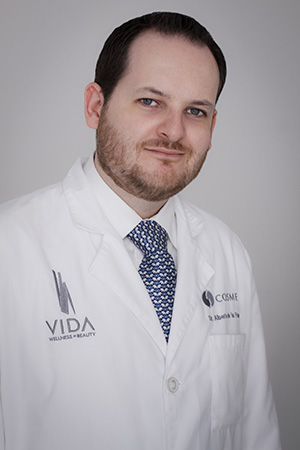

Meet Dr. Alberto De La Fuente, he is our board-certified Dermatologist practicing atVIDA Wellness and Beautyin Tijuana. He specializes in Cosmetic Dermatology, Laser treatment & Non-invasive procedures, Medical Dermatology and Surgical Dermatology. He is a member of the Mexican Academy of Dermatology, Mexican Board of Dermatology, Educational Commission for Foreign Medical Graduates, American Academy of Dermatology.
Learn more about Dr. Alberto De La Fuente, here.
Contact us today for more information
Contact us today for more information
If you would like to find out more about CO2 laser skin resurfacing and the different treatments that we have available at Vida Wellness and Beauty, please do not hesitate to get in touch with us. We would be more than happy to answer any queries or concerns that you may have. We also have virtual consultations available for those who are not local, as well as anyone who would simply prefer to have this consultation online at the present time.
For more information, to solve doubts or to schedule a consultation and discover how CO2 Laser Skin Resurfacing can help you, call VIDA at 1 (619)738-2144.

